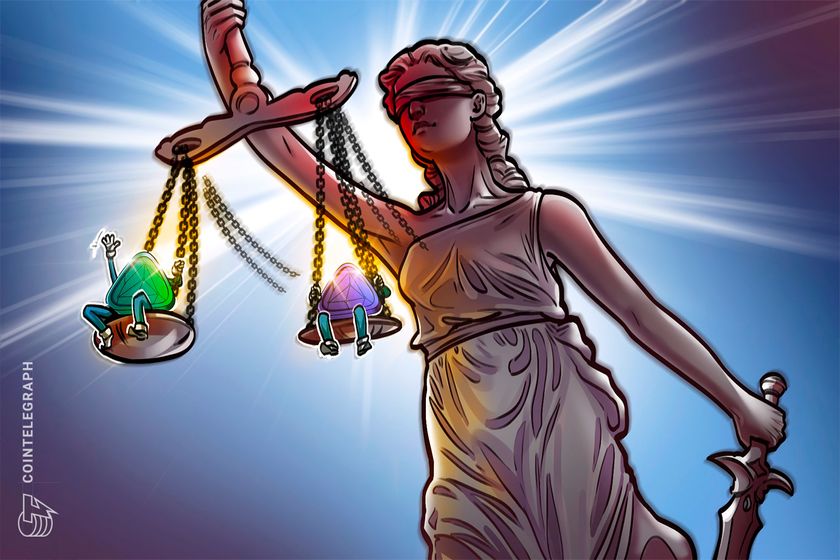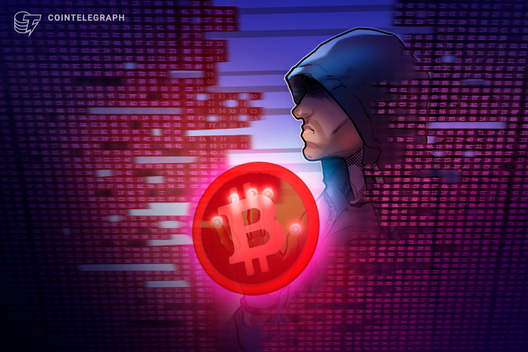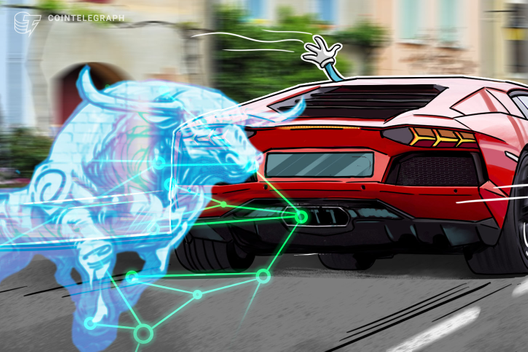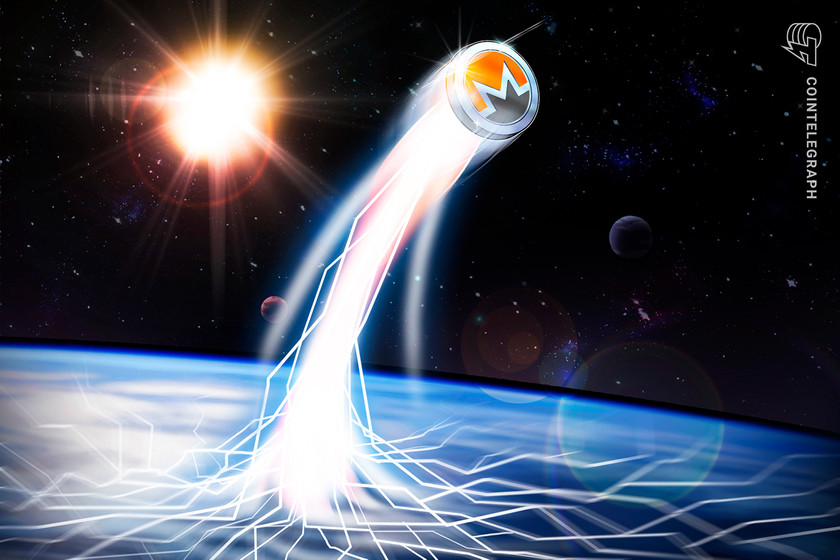Genomics company explores NFTs in hopes of advancing precision medicine
It’s predicted that nonfungible tokens (NFTs) will have a vast impact on society. Given this, it shouldn’t come as a surprise that the trillion-dollar healthcare sector has begun to explore NFTs tokens to advance medicine.
It’s also important to point out that blockchain technology can play an increasingly important role within the healthcare sector. This was recently highlighted in a report from the European Union Blockchain Observatory, which specifically documents how blockchain applications can solve challenges facing the healthcare industry.
For example, the paper notes that patient engagement and transparency of how data is stored, along with the effective distribution of knowledge and data remains problematic for the healthcare sector. Yet, as the blockchain space continues to advance, tokenization in the form of nonfungible tokens may serve as a solution to many of the challenges facing today’s healthcare industry.
GeneNFTs aim to revolutionize precision medicine
For those unfamiliar with the term, precision medicine refers to “an emerging approach for disease treatment and prevention that takes into account individual variability in genes, environment, and lifestyle for each person,” according to the Precision Medicine Initiative.
Specifically speaking, Cao believes that tokenizing genetic profiles can help patients maintain data ownership and transparency into their insights while receiving many benefits that are not typically associated with traditional genomic testing. He explained:
For example, Genetica, a genomic company catering to the Asia Pacific region, recently partnered with Oasis Labs, a Web3 data management firm, to tokenize genomic profiles. Tuan Cao, Genetica’s CEO and co-founder, told Cointelegraph that the goal behind this partnership is to advance precision medicine by giving patients data ownership and rights through GeneNFTs.
“This may be one of the most important NFT applications in the world. Our genetic profile is unique and it should be represented by an NFT. GeneNFTs are the tokenized ownership of one’s genetic data. This enables each of us to truly take control and benefit from our data contribution.”
According to Cao, traditional genetic testing companies like 23andMe, for example, rely on intermediaries to collect patient data for research. As such, users must trust centralized entities to safely store sensitive health information. Moreover, users do not receive any incentives for opting to share their data with third parties. Yet, tokenizing genomic data in the form of an NFT has the potential to transform this model entirely.
For instance, Cao explained that Genetica’s partnership with Oasis Labs enables users to perform a traditional genetic test and receive a GeneNFT afterward that represents true ownership of their genetic profile. More importantly, Cao noted that GeneNFT holders become the gatekeepers of their data, meaning they must grant access to third-party entities that wish to use that information. He elaborated:
“A user holding a GeneNFT also holds the private key for that data. If a pharmaceutical company for instance wants to run a genetic study, they must send a proposal for access. A user can then sign the proposal to approve the access.”
Cao further explained that there are both financial and medical benefits associated with GeneNFTs. “Financial benefits involve revenue sharing, so users will get paid when third parties request to access their data. We are able to issue these payments automatically due to blockchain technology and smart contracts,” said Cao.
Cao believes that the medical benefits achieved from GeneNFTs outweigh the financial incentives. “When users participate in a genetic study, a smart contract is leveraged to ensure patients will receive treatment first if they contribute to a clinical trial. Precision medicine profiles for treatments of certain diseases based on genetic variants, which is how this model is ultimately advancing precision medicine,” he said.
Dawn Song, founder of Oasis Labs, told Cointelegraph that GeneNFTs can be viewed as data-backed nonfungible tokens. “Typically people think of NFTs as JPEG images, but data-backed NFTs combine blockchain with privacy computing to utilize certain pieces of data while still complying with data usage policies like the EU’s data protection regulations, or GDPR,” she said. Technically speaking, Song explained that Genetica will use Oasis Network’s Parcel, a privacy-preserving data governance application programming interface (API), to tokenize genomic profiles. She elaborated:
“Given that genomes are the quintessential identity of individuals, it is critical that any platform that stores and processes genomic data provides confidentiality to the data at rest, in motion and, more importantly, in use. Parcel provides these capabilities via the use of encryption of data at rest and in motion and trusted execution environments to maintain data confidentiality in use.”
Given the size of genomic data and the complexity of the computations that run on them, Song further explained that Parcel’s use of off-chain storage and off-chain secure execution environments makes it possible to store genomic data and run analyses on them. “Parcel also supports a policy framework that is used by data owners, or individuals as owners of their genomes, to specify who can use their data and for what purposes,” she added. To date, Oasis Lab’s technology has enabled the tokenization of 30,000 genomic profiles, and the partnership with Genetica will increase this number to 100,000.
Healthcare industry already uses tokenization
While NFTs are an emerging concept for the healthcare sector, it’s interesting to recognize that tokenization in an entirely different sense from NFT) is becoming more common as patient privacy becomes critical.
For example, Seqster, a healthcare technology company founded in 2016, provides tokenized data to address privacy needs across the healthcare industry. Ardy Arianpour, CEO and founder of Seqster, told Cointelegraph that the company tokenizes various forms of patient data, including genomic DNA data, for healthcare providers:
“Seqster tokenizes a patient’s personal information fields such as their name, address, phone, date of birth and email into a set of unique tokens that a company can then use to identify a patient within its network. Tokenization allows each organization, provider, payer and researcher to have their own internal unique ID representing a real patient without revealing to the other party in a transaction whom the patient actually is.”
According to Arianpour, tokenization in this regard is essential to avoid exposing personal health information about a patient without their explicit consent, which would be a violation of the Health Insurance Portability and Accountability Act (HIPAA). On the other hand, Arianpour explained that while tokenization is helpful, it is not always necessary. “In certain environments, like clinical trials, the sponsoring organization can generate a ‘subject_id’ that uniquely identifies the patient. That ID can be shared within their organization or with partners without revealing the patient’s actual identity. This is a more widely used standard among the clinical trial space and also meets FDA compliance,” he said.
Datavant, a healthcare data company, has also been leveraging tokenization to ensure patient information is private yet accessible. McKinsey & Company recently featured an interview with Pete McCabe, CEO of Datavant, in which he explained how tokenization is used.
According to McCabe, Datavant defines tokenization as “cutting-edge, patent-pending de-identification technology that replaces private patient information with an encrypted token that can’t be reverse-engineered to reveal the original information.” McCabe added that tokenization in this regard “can create patient-specific tokens in any data set, which means that now two different data sets can be combined using the patient tokens to match the corresponding records without ever sharing the underlying patient information.”
Education is critical
While it’s notable that NFTs are starting to be applied to healthcare, a handful of challenges may hamper adoption. For instance, Robert Chu, co-founder and CEO of Embleema — a data platform for personalized medicine — explained in the EU Blockchain Observatory’s healthcare report that data must be de-identified in the United States without the possibility of reidentifying patient information in order to comply with HIPAA. But, Chu explained that this becomes challenging once only a few patients participate in the dataset:
“In this example, it may be impossible for any method to completely de-identify the data. Should we then forbid any research for rare diseases, even if patients agree to share identified data? In our opinion, it should not. This example demonstrates well that there needs to be a balance between privacy and innovation.”
To Chu’s point, Cao mentioned that people using GeneNFTs to participate in a clinical study will receive treatment first if they contribute their data. This would also mean that their data would be identifiable, which may result in regulatory concerns in specific regions like the U.S.
Moreover, Cao shared that 90% of Genetica users are non-crypto natives. Therefore, Cao believes that the biggest challenge for the adoption of GeneNFTs is education. “We have to put in extra work to educate almost all of our users on the benefits of GeneNFTs, explaining how these provide data ownership, accessibility and utilization,” he said. Echoing Cao, Song commented that user education is indeed the biggest hurdle for adoption. “Many users understand what an artwork NFT is, but they are not familiar with data-backed NFTs.”
Although this is currently the case, Song believes that data-backed NFTs have the potential to transform society as the world’s economy becomes data driven. “This approach could grow fast, but we first need to get users to understand this model better. Compared to a few years ago, user awareness has fortunately been much higher in regards to emerging data protection methods.”









